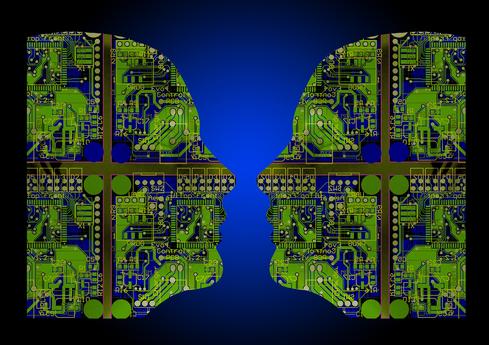IoT And The Looming Mobile Tidal Wave
If you thought handling BYOD was hard, wait until you see what managing mobile devices for the Internet of Things entails.


11 IoT Programming Languages Worth Knowing
11 IoT Programming Languages Worth Knowing (Click image for larger view and slideshow.)
Most of us first think of mobile and its relationship to the Internet of Things (IoT) in terms of the many consumer services being launched – from HVAC control systems to wearables -- with the smartphone front-and-center as the user interface for these other "smart" devices.
That's only a small part of how mobile plays into, and with, IoT. Mobile actually made IoT possible, and the advent of big data tools made it desirable. After all, the Internet of Things is not really about things, but about data. IT will soon have to determine how to manage mobile in its new IoT roles. Here's what you need to know first.
"The invention of the BlackBerry and iPhone created a huge market for sensors in those devices," said Frank Gillett, industry analyst at Forrester, in an interview with InformationWeek. "This resulted in much better and less expensive sensors which, in turn, fueled IoT."
Beyond spurring sensor development and new data-gathering capabilities, such as geolocation and user activity tracking data, mobile technologies provided much needed connectivity for sensors placed practically anywhere.
"Mobility is crucial, considering IoT comprises of billions of wireless devices that require real-time connectivity while on the go -- specifically connected/autonomous vehicles and smart cities elements such as traffic lights, smart grid, public lighting, waste disposal, and parking solutions," said Darren Tan in an email interview. Tan is a Senior Intelligence Unit (IU) Director at Delta Partners, an advisory and investment firm specializing in the telecoms, media, and digital (TMD) space.
As cellular carriers continue to cap data usage in their plans, and thus encourage the use of WiFi where and when available, they are also struggling to prepare to connect more devices and transmit more data than ever before.
"Mobile is a massive foundation element of IoT no matter how you look at," said Brian Partridge, vice president of Mobility Research at 451 Research, in an interview. "Mobile cellular and short-range mobile network technologies such as WiFi, BlueTooth, and IPv6 over Low-power Wireless Personal Area Networks (6LoPAN) will represent the majority of IoT connections -- for instance, on the roads.
A World Of Mobile Everything
That is not to say that that all "things" will connect directly to the Internet. Many will be tethered to hubs which connect to the Internet. Indeed, some argue that the Internet of Things is not even really about connectivity to the Internet but is, instead, all about mobile.
"Quite simply, the Internet of Things would not exist without mobile," said Alex Brisbourne, CEO of KORE, which provides wireless connectivity (cellular and satellite) for IoT devices, in an interview. "In fact, I consider terming it an 'Internet' as a bit of misnomer, because it largely consists of wireless-connected, non-phone mobile devices interacting in a client-server, or hub-and-spoke model. The Internet analogy does not, and should not, apply for most real-world applications coming online today."
According to Brisbourne, "The level of interconnectivity among devices that's needed for these applications is actually pretty low, as they tend to use dedicated point-to-point communication, and point-to-point service delivery. For example, an irrigation system that responds to physical weather conditions and decides, singularly, when to switch on a sprinkler system. The IoT requires a much simpler mobile architecture [than mobile phones] as the environment is quite closed, generally capable of flowing a particular type of data in one direction. It is not an extension of the Web into the life of devices."
In any case, it is clear that IT must change its view of mobile in light of its formative and essential role in IoT and all that entails.
"For organizations that think BYOD was hard; IoT will be tidal wave," said Mark Mueller-Eberstein, author of several tech books and founder and CEO of Adgetec Corporation. "People will bring their connected devices into the workspace, making security, connectivity manageability and overload, and IT manageability a nightmare if not planned and understood correctly."
Mobile, IoT, And IT
It is important to reevaluate your cellular and WiFi networks to accommodate more devices, most of which will be simply tasked sensors. You'll need to prepare for more network traffic, not to mention the need for increased security and protection tactics. Before we get there, though, there are three crucial ways mobile plugs into IoT for which IT must prepare:
Apps designed to control things
Data collection
Apps designed to deliver big data analytics to the mobile user
Undoubtedly more than these three will evolve but these are the first set of challenges.
Fortunately, much of IT's experience with mobile will come in handy for successfully managing these issues in the IoT.
"The back-end systems for IoT will 'look' like traditional mobile back-end systems with much greater level of scale and support for device diversity," says 451 Research's Partridge. "Also important are cloud and big data, as they provide the tools and economics to handle the volume of data implied by IoT."
Much of app development and app management will also be similar, at least in part.
[ Where else will IoT lead us? Read Chris Anderson: Weaponized Lego, Drones and IoT. ]
"IoT devices share more similarity to BYOD than to MDM, although device management will still be an issue," says Forrester's Gillette. "The same phenomena emerge yet in a different way. For example there are only two-plus-a-wannabe operating systems in mobile, whereas IoT will bring an enormous variety to manage."
"Each set of connected products has a different IoT platform attached to it so it will never get as simple as managing traditional mobile devices, however the complexity will decrease some over time," he added.
Begin by using your mobile policies and infrastructure as a guide in planning for the inclusion of IoT in the business. Just be sure to do so with the understanding that there will also be other forms of connectivity in the mix. Mobile is not the be-all and end-all in the IoT work.
"Mobile communications do form one of the key foundational technologies in the world of IoT, but mobile communications will represent only one of a number of potential connectivity options available to people who are building out IoT infrastructure," said Gary Barnett, chief analyst, software, with Ovum, in an interview. "The connectivity technology they choose will be driven by a number of factors like the availability of WiFi and cellular signal, long-range radio for rural environments, and even satellite communications for very remote deployments."
Your work with mobile in IoT is just the beginning of a long journey, but given that mobile anchors IoT, it's the smart place to start the venture. Where are you on your own IoT journey in IT? Are your company's mobile strategies up to the looming task? Tell us about it in the comments section below.
Interop Las Vegas, taking place April 27-May 1 at Mandalay Bay Resort, is the leading independent technology conference and expo series dedicated to providing technology professionals the unbiased information they need to thrive as new technologies transform the enterprise. IT Pros come to Interop to see the future of technology, the outlook for IT, and the possibilities of what it means to be in IT.
About the Author
You May Also Like






